For months advocates and opponents of a proposed Bears Ears National Monument debated the pros and cons of such a designation. It appeared all but certain that President Obama’s administration would embrace the plan and monument proponents appeared to have the future on their side; after all, a Hillary Clinton administration was bound to support any proclamation by President Obama, and who in their right minds thought Donald Trump had a prayer’s chance of winning the election?
But he did win, throwing pro-monument forces into a state of chaos and giving opponents an unexpected second wind. On December 28, despite the uncertainty a designation might create after January 20, Obama made the proclamation anyway.
Since then, the debate over Bears Ears National Monument continues unabated. Both “sides” of the debate claim they want to protect the area and both cast doubt on the sincerity of their opponents’ claims. It goes on and on…
At the heart of the debate is the question—WHY? Why do we need national monument designation for 1.35 million acres of federal lands now administered by the BLM and the US Forest Service? What are the addressed concerns and impacts that would be mitigated?
They fall into three categories:
1. Archaeological protection. Proponents maintain that more than 100,000 archaeological sites are at risk from vandalism and looting, and that more protection is needed for those resources.
2. As expressed by the Southern Utah Wilderness Alliance, “Elevate the voices of the Native American tribes who have ancestral ties to the region.” This was crucial to designation. In fact, environmentalists concede that without Native American support, the Bears Ears proclamation would never have happened. Many of the participating tribes believed that a monument would guarantee their “active co-management” of monument land.
3. Energy development impacts. Monument supporters insist the region is in imminent danger of massive oil and gas development and their associated impacts without monument designation.
Remarks like this—“The results of a rescinded or lame duck monument will include rapid permitting for oil and mineral development.”— are common and assumed to be true by the vast majority of monument supporters.
* * * *
But what’s the reality in all this? Are these concerns valid and was monument designation the ONLY way to protect the natural resources of those 1.35 million acres? After all, that’s everyone’s perceived goal.
Right now, the Monument designation stands. However, here are a set of alternatives that I believe could have offered greater protections to the Bears Ears area without Monument designation AND addressed perhaps the greatest threat of all, the one environmentalists won’t mention: “Industrial Strength Recreation.”
While these ideas are currently only theoretical, if the Trump Administration manages to reverse the Monument in the future, proponents and opponents may want to keep these suggestions in mind…
1) Strictly enforce the Archaeological Resource Protection Act of 1979 (ARPA).
ARPA was passed by Congress specifically because the protections provided by the Antiquities Act were deemed insufficient. This statute (16 U.S.C. 470aa-470mm; Public Law 96-95 and amendments to it) was enacted
…to secure, for the present and future benefit of the American people, the protection of archaeological resources and sites which are on public lands and Indian lands, and to foster increased cooperation and exchange of information between governmental authorities, the professional archaeological community, and private individuals (Sec. 2(4)(b)).
National monument status will NOT provide more specific legal protection of resources. ARPA is the law for ALL federal lands and has been for almost 40 years. What monument status could provide is more funding for more enforcement, and more restrictions on public lands, like road closures and even the designation of ‘closed areas.’ as determined by the superintendent.
But it comes with a self-defeating caveat—more money is only likely to follow massive increases in visitation AND the ensuing damage to the sites that most need protection. Is there a way to provide protection without relying on massive increases in tourism and recreation to generate the funding?
2) Create an “ARPA Enforcement Unit”
Like most national monument designations in the past, and almost surely with Bears Ears, we can expect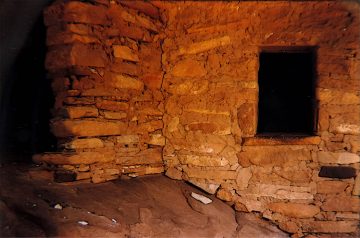 the expenditure of MILLIONS of dollars on infrastructure construction like visitor centers and interpretive exhibits, and exorbitantly expensive road improvements. And for sure, we can expect the bewildering bureaucracy that always comes with government projects like this. IT ALWAYS HAPPENS.
the expenditure of MILLIONS of dollars on infrastructure construction like visitor centers and interpretive exhibits, and exorbitantly expensive road improvements. And for sure, we can expect the bewildering bureaucracy that always comes with government projects like this. IT ALWAYS HAPPENS.
Even more relevant to the debate over monument costs is the simple fact that a Trump administration, even if it fails to rescind the monument, is not going to invest heavily in master management plans.
Instead, invest a portion of this kind of boondoggle on something different and more effective, instead of wasting money that never touches the monument’s perceived objectives.
The primary objective here is to protect the area’s archeological resources. So, use the funding to create an “ARPA Enforcement Unit,” composed of trained rangers from the Inter-Tribal Coalition, BLM, and USFS. They can target the sensitive areas most vulnerable to vandalism and damage. (Antiquities are not evenly distributed across the Bears Ears area.).
They can also assure that Native Americans are allowed to continue the traditional practices they have feared might be placed in jeopardy. They could also preserve and protect those traditions and improve communications for everyone.
Monument supporters have ignored the fact that the monument proclamation fails to provide any legal authority to “actively co-manage” the monument as was once promised. Now, incredibly they still claim the monument supports the Inter-Tribal Coalition’s original objective. It does NOT.
And they note that in spite of the toothless language of the proclamation, the Inter-Tribal Coalition still supports the designation. That, remarkably, is true. But it’s worth recalling that in 1868, most tribal leaders thought the Treaty of Laramie was a fair deal too. It took years to realize how badly the government had betrayed them.
The most vocal monument activists—the urban, affluent, over 50, white, mainstream environmentalists who have pushed this issue since the beginning—benignly accept the “Commission” and categorically dismiss local Navajos who overwhelmingly oppose the monument. Yet, when I confronted one Monument supporter recently, he said, “Compromises were required.”
At whose expense?
Deep pocket groups like the Conservation Lands Foundation even sought ways to skirt Native American participation. According to the Deseret News, “In the (CLF) board meeting, (chairman) Norton questioned if the group was ‘hitching our success to the Navajo and if so what would happen if we separate from them or disagree with them…,’ the minutes read.”
So when it comes to funding an ARPA Protection Unit, maybe Patagonia, the Wyss Foundation and the Conservation Lands Foundation will contribute to the effort.
3) Withdraw all oil and gas leases that are commercially marginal within the boundaries of the monument.
The truth is, opportunities for lucrative oil and gas exploitation within the heart of the monument are low. Federal land managers maintain that the threat of oil and gas development under sensitive areas like Cedar Mesa and Grand Gulch are extremely unlikely.
Several years ago, the Bureau of Land Management planning office prepared a document called a “Reasonably Foreseeable Development Scenario for Oil and Gas” in the Monticello, Utah area. The survey included 4.8 million acres of federally managed lands in San Juan County, Utah. Much of the proposed monument overlays what’s called ‘The Monument Upwarp.’ and “development potential for the Monument Upwarp is considered moderate to low.”
Yes, there are some who still insist there are commercially viable reserves but the geology and the research do not support the claims. By eliminating even the remote possibility of pump-jacks between the Bears Ears or atop Moon House Ruin, arguments for the monument, based on unproven assumptions could end.
3a) Restrict all energy development below the Canyon Rims at the far north end of the monument.
There is the potential for oil and gas production in Hatch Point area, at the very north end of the proposed monument. In fact, most of it lies outside the monument boundary. Some environmental groups have suggested, via computer generated image (CGI) videos, that much of Lockhart Basin, along the Colorado River, could someday by inundated with oil wells and gas flares, but transporting energy from that remote location would be very costly. If it ever became profitable, it’s a fair bet that the price of a gallon of gas would make tourist travel cost-prohibitive.
By prohibiting oil and gas exploration below the Canyon Rims, the debate about threats to that area could be put to rest.
* * *
Those are the concerns expressed by monument supporters and the solutions I propose for mitigating them. But there are other impacts and consequences that environmentalists have not addressed–at least not lately–and they require attention as well. Consequently, Utah environmentalists must speak up…
4) Environmentalists must acknowledge publicly that “Industrial Strength Recreation” is a serious threat to wildlands in SE Utah
The Unspoken Threat to the area has always been Industrial Tourism. For months prior to the December 28 announcement, monument proponents were silent on the issue and the impacts they might create. For groups like SUWA and the Grand Canyon Trust, this comes as no surprise–they haven’t acknowledged the impacts from an Industrial Recreation economy in almost two decades.
And yet it was the Grand Canyon Trust’s Bill Hedden who warned in 1998 that, “Everywhere we looked, natural resource professionals agreed that industrial-strength recreation holds more potential to disrupt natural processes on a broad scale than just about anything else.”
In 1993, SUWA’s now-executive director Scott Groene wrote this:
“Abiogenesis (the natural process by which life arose from non-living matter such as simple organic compounds) does not cause Moab tourism. People are drawn here by advertising, guidebooks, and publicity created through travel films, newspaper features, outdoor magazines and the like. And because of the large numbers of people being drawn to the Moab area, frequently, and justifiably, federal land managers now lament the damage being done by too many recreationists. Recreation is like any other public land use: too much in the wrong place can be bad.”
And in 2003, Terry Tempest Williams wrote to this writer: “This problem of recreation and wildness, wilderness, has escalated to the point where they/we (environmentalists) have to look at it.”
Even Patagonia founder Yvon Chouinard sees the risk when he recently complained to The New Yorker, “Everyone doing this ‘outdoor life style’ thing. It’s the death of the outdoors.”‘
But nothing happened. Utah environmentalists should publicly acknowledge again that these 20 year old warnings about “industrial strength recreation” are even worse than anyone thought they could have imagined in 1998.
And they need to do something about it.
Demand an end to reckless and ultimately destructive marketing schemes like the “Mighty Five” tourism campaign.
Publicly denounce the runaway recreation industry that is destroying communities like Moab and the once wild areas that surround them.
5) Environmentalists–Anglo and Native Americans alike—should disassociate themselves from the Outdoor Industry Association and the ‘Industrial Strength Recreational/Tourism’ industry in general.
When did concern for the wilderness become a slick, profit-driven enterprise, engineered by ad executives and promoted like one might sell a car? Many will argue that it would be like biting the hand that feeds you But isn’t that the problem?
Consider this, and to repeat Mr. Hedden’s comment for about the 15th time in this publication—
“industrial-strength recreation holds more potential to disrupt natural processes on a broad scale than just about anything else.”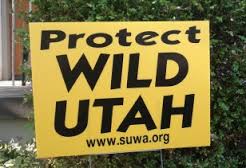
No environmentalist would expect an organization like SUWA or the Grand Canyon Trust to support (or be supported by) the likes of the Western Energy Alliance or the American Petroleum Institute. Environmentalists all agree that energy development has “the potential to disrupt natural processes.”
But Hedden put “industrial-strength recreation” ahead of all other forms of environmental destruction. We would not expect an environmental organization to support any industry that disrupts natural processes. Why is there an asterisk for this one?
All we ask for is consistency.
* * *
Within the segment of the Native American community that supports the Bears Ears proposal, it’s clear that many of their views on tourism and the recreation economy are in synchronicity with environmental groups (and born again tourism boosters) like the Southern Utah Wilderness Alliance (SUWA) and the Grand Canyon Trust. The Coalition’s embrace of recreation/tourism dollars deserves some attention.
Among Navajo leaders in support of the monument, Kenneth Maryboy, stands out as one of its most vocal. Maryboy is president-elect of the Mexican Water Chapter House and president of the Navajo Medicine Man Association He states, “Where my family and other families used to live is sacred. These are places like Cedar Mesa, Dark Canyon Plateau, East Canyon, Harts Draw, Montezuma, North Comb Ridge, Salt Creek Mesa, and White Canyon.”
In a recent Salt Lake Tribune editorial, he wrote, “The Bears Ears National Monument can be a great thing for all Americans, but only if we realize its potential together.” though he chided other Navajos who oppose the monument, calling them “tame Indians” in a recent facebook post.
But what kind of “potential” does Maryboy envision? He and other Native American supporters of the monument must see “potential” in a recreation economy that has already transformed areas like Moab, just 55 miles north in Grand County. For example, last summer the Inter-Tribal Coalition chose to publicly embrace rock climbing inside the monument, and plan to encourage its recreational benefits; yet other Native Americans have fought rock climbers for control of sacred sites across the West, including Devils Tower in Wyoming and Cave Rock in Nevada. Each time, Native Americans, who preferred NO climbing on their iconic sites, were forced to compromise.
Other tribal tourism projects have also caused controversy and created serious divisions.
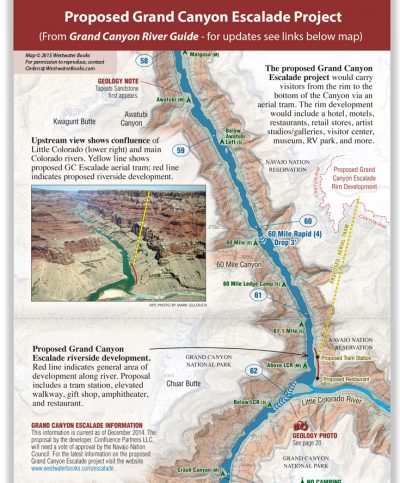 One tribal planned development that has been opposed by almost all environmental groups who support Bears Ears National Monument is the controversial Grand Canyon Escalade, to be constructed at the Confluence of the Colorado and Little Colorado Rivers.
One tribal planned development that has been opposed by almost all environmental groups who support Bears Ears National Monument is the controversial Grand Canyon Escalade, to be constructed at the Confluence of the Colorado and Little Colorado Rivers.
Escalade continues to generate debate and discord. According to the web site ‘Post-Independent.’ “A private development group, Confluence Partners LLC, based in Scottsdale, Arizona, first proposed the plan in 2012, which would occupy 420 acres near the confluence of the Colorado and Little Colorado rivers. The development’s main draw would be the Escalade, a gondola tramway from the canyon rim carrying visitors to a location near the canyon floor”
It would also provide for the future development of hotels, and “a themed cultural and historical, recreation, arts, events, education, dining and shopping experience.” The Escalade would be visible from the eastern edges of Grand Canyon National Park.
Even the Grand Canyon Trust opposes the Escalade. Its web site notes:
“This proposed development, located above the sacred confluence of the Colorado and Little Colorado rivers, includes a 1.4-mile tramway that would shuttle up to 10,000 visitors a day to the bottom of the Grand Canyon. It also features an elevated walkway and amphitheater below the rim, as well as a hotel, restaurant, RV center, and other resort attractions above the rim.
“The entire area is sacred to Navajo, Hopi, Zuni, and other native people of the Grand Canyon region. For river runners and millions of other citizens, the development “would desecrate one of the country’s most beloved wilderness shrines.”
The National Park Service, other environmental groups and most Native Americans have adamantly opposed the plan. And Robert Redford, a Bears Ears supporter, has publicly denounced Escalade. In a recent video, Redford declared:
“I stand by and support Save the Confluence…A group of courageous Navajo families who are fighting to save their sacred connection to their land. They welcome the opportunities for economic prosperity, but not at the expense of their culture.”
But according to the Post-Independent, “Navajo supporters of Escalade say the project promises to be of great benefit to the tribe. Many have criticized attempts by non-tribal members to forestall the project. Some have referred to the Hualapai’s Grand Canyon Skywalk, on the south rim of the canyon, as a local success.”
Among those Navajos who SUPPORT Escalade is Kenneth Maryboy.
Maryboy’s Escalade support is actively opposed by other Navajos, including “Save the Confluence,” a coalition of local Navajo families who have have had homes near the Confluence for generations; they continue to actively oppose the Escalade development.
 Reporter Marley Shebala (Diné Bureau) made these observations on November 11, 2016 in the Gallup Independent. They were re-posted to the Diné C.A.R.E Facebook page:
Reporter Marley Shebala (Diné Bureau) made these observations on November 11, 2016 in the Gallup Independent. They were re-posted to the Diné C.A.R.E Facebook page:
“Former Council Delegate Kenneth Maryboy, of Aneth, Utah, informed the Naa’bik’iyati’ Committee that the Northern Navajo Medicine Men’s Association appointed him as its chairman and that the Navajo Medicine Men’s Association supported the Escalade.
“After Maryboy made his presentation, he left the meeting and didn’t hear Tso’s challenge to his statement that the Medicine Men’s Association supported the Escalade…Tso also told the Escalade developers, ‘If you want to build it, build it in your backyard. We don’t have to develop our sacred areas.’”
“He explained that the Dine’ Medicine Men’s Association and the Dine’ Hathali Association both approved resolutions opposing the Escalade development..Tso said both resolutions were forwarded to the Naa’bik’iyati’ Committee’s Sacred Sites Subcommittee, which also supported the resolutions. And he said the Hathali Advisory Council — which consists of hathalis, who perform major Navajo ceremonies — also opposed the Escalade.
“Tso said Maryboy needs to show the him and the Naa’bik’iyati’ Committee the resolution from the Dine’ Medicine Men’s Association that rescinded the association’s resolution opposing the Escalade and the one supporting the Escalade.
“As we look ahead in San Juan County, Native Americans face the greatest challenges of any population in the state of Utah with the highest unemployment and poverty rates, the lowest educational achievement scores, and the greatest obstacles for shaping our future. Local Native Americans have deep knowledge of Utah lands, as well as visionary solutions to bring to the table to address these challenges. Yet we lack a pathway within Utah to be heard.”
Do Kenneth Maryboy’s “visionary solutions” include a massive investment in tourist/recreation infrastructure for the national monument and the region? That’s not the kind of transformational strategy— “pathway”— that so many other environmentalists, Native American and Anglo alike, want for the Bears Ears.
It is narrow minded to assume all Native Americans share exactly the same values and beliefs. The fact that there are those among the Navajos who support extreme recreation and massive tourist developments, and those who passionately oppose those kinds of non-traditional economies, makes that evident.
It’s also understandable that most Native Americans, despite the despicable treatment they’ve received in the past, still want to be hopeful that the Proclamation was in their best interests. But it should be a legitimate concern that they may be disappointed yet again.
* * *
At the end of the day, we have to ask—do the remaining wildlands of southeast Utah deserve protection and care? Absolutely. But will national monument designation provide those protections? And, if the Monument is rescinded, could we find other ways to protect the archeological resources of the area, reduce the threat from energy development and empower Native Americans to protect the Bears Ears region?
And finally, will the inevitable marketing and promotion of a new monument in southeast Utah bring untold masses of people to the area? Will it create a completely new list of impacts and damage to the resource and to the communities that are found near it?
Unless environmentalists and all supporters of the Bears Ears, also address these issues, I fear that in a matter of decades, we may find that monument designation has destroyed the very qualities in the Bears Ears region that proponents are trying to protect.
Jim Stiles is Founder and Co-Publisher of the Canyon Country Zephyr.

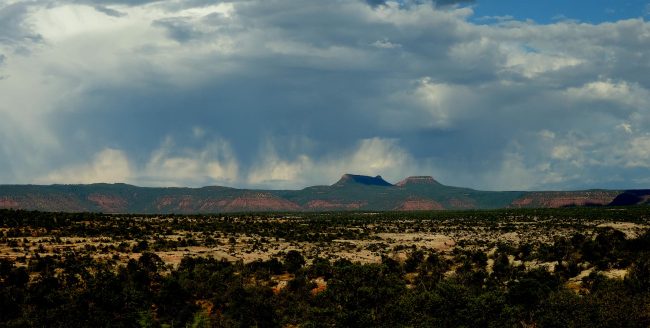
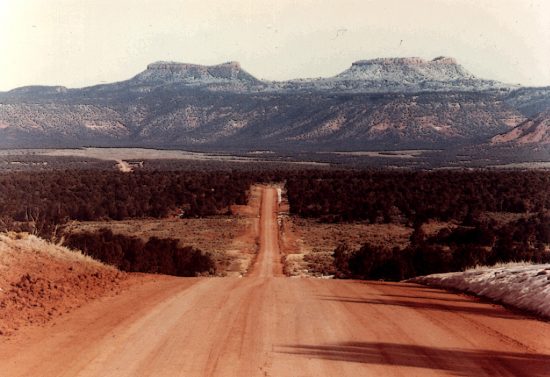
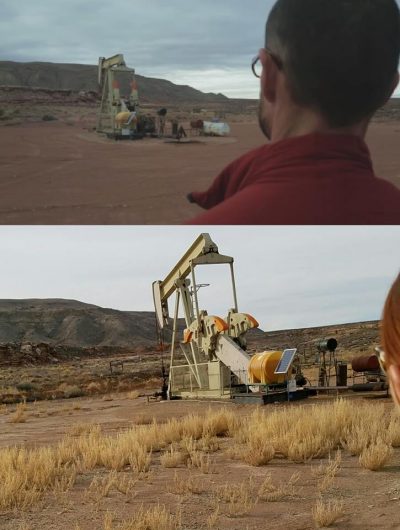
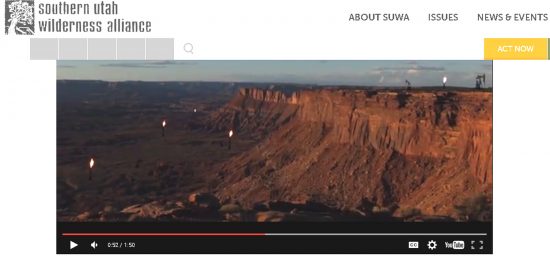


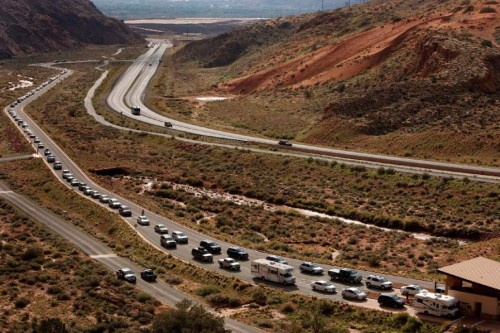
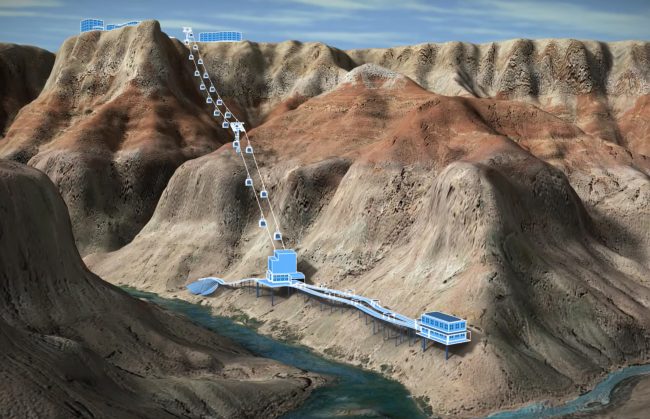
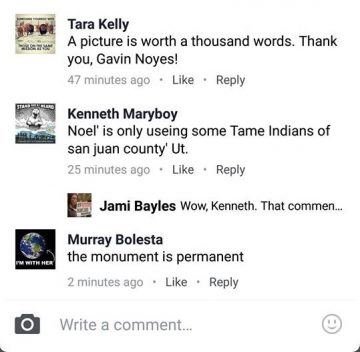
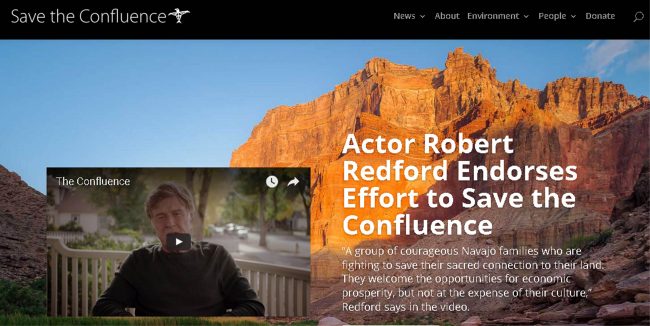
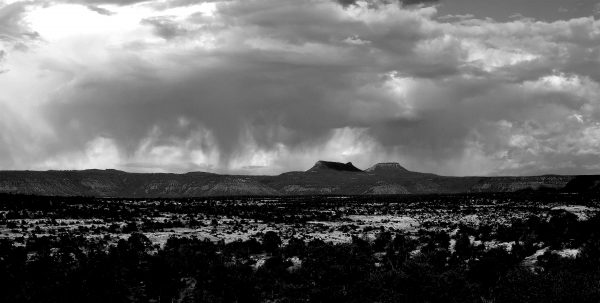





The best thing that could have happened to SE Utah would be nothing. Keep it secret, keep it safe. Short of that – if the choice is grazing or energy extraction or industrial tourism, I’ll take my chances on the former. At least a few cows don’t disturb your solitude. There isn’t much in the way of extractable energy resources on Cedar Mesa or in much of Bears Ears – the San Juan cut down through those salt domes and 99% of the oil drained out 30,000 years ago.
As always, right on the money Stiles. I got a beer with your name on it if you ever make it to Colorado – specifically near RMNP.
Apparently, perhaps everyone is worn out regarding the good old Bears Ears. Worn out with trying to get the truth out there to counter the massive, big green propaganda machine that ceaselessly fought to manipulate public opinion to help “justify” the monument. Worn out with the fighting and division in towns and communities. Worn out with a broken government system that allows an act of this magnitude to be made with no system of checks or balances at any level.
You speak to the truth in this article Stiles, there are a myriad of ways to protect the resources in the area. Fact being most of it was already under protective management with non-leasing or very strict controls over leasing, a new travel management plan that went through extensive public review, strict recreation guidelines for Cedar Mesa and Grand Gulch where the majority of the archeological sites are located, etc.
But I don’t believe it was ever really about that, “protecting the resources”. It’s about ideological dogma and inflexibility. It’s about control – who will be the next big industry to control federal resources on these public lands. The old minerals industry and cowboys had that control, had their time, had no trouble sharing. The new outdoor recreation industry, not quite so magnanimous, sharing won’t work for them. Keep your dirty wells and cows out of our sight, and join in saving the planet and these poor local fools from themselves.
According to the people at Waterpocket Press in Torrey (as previously evidenced in their comments to your reporting), and those who think like them, it’s simply “adapt to the way we see it or leave.” And the more non-local land management control that can be gained over these lands via political operatives in DC, and the more political control in local commissions and councils that can wielded within the “pretty and rustic” communities that are surrounded by these lands, the easier it becomes to accomplish that lofty goal.
I guess we’ll all wait to see what happens next. I got no idea. But irregardless of what happens at Bears Ears, I believe it’s time to put some checks and balances on the Antiquities Act. I don’t necessarily advocate repealing it, but it can’t be allowed to continue to be used in this manner.
These vast restrictive land designations should not be created unless there is some credible significant majority up and down the elected food chain, that want such designation. Short of that, it’s just one side forcing its will on the other for ultimate control.
We gotta all try to get along… Thanks, Lynn for taking time to pen the useful and practical words.
After reading Stiles in the High Country News, I just have to respond. A monument designation is a better way to add protection to an area that has many archeological sites, potential minerals, and greedy Utah or US politicians. Stiles talks about some hypothetical administrative protections that can come and go depending on the politics. The idea of an administrative mineral withdrawal is a joke, check on Alaska right now. He also tries to compare a tiny national park (Arches) that is practically in the city limits of Moab, to the 1.3 million acres Bears Ears and assumes “Industrial Recreation” will ensue. Of course Rep’s Bishop and Chaffetz assume the opposite, that somehow designation as a national monument will economically devastate the thriving towns of Bluff and Blanding. It will more likely turn out like the Escalante Grand Staircase, or Great Basin National Park, where an increase in business in nearby towns is very welcome, but hardly like the traffic jams in one small part of Zion or Arches.
Several writers and commentators have missed the fact that a monument on BLM and Forest Service lands can have far different rules than a monument in the National Park Service system. Cows can potentially be included here but I think they need to be kept away from the archaeological sites. In addition, the attempts to create an alternate structure, such as a National Conservation Area, failed. The state politicians are disingenuous when they claim there wasn’t enough local involvement. Bullshit on that one. . Apparently, Utah state negotiators missed deadlines, cancelled meetings on short notice and generally didn’t seem to consider the tribal residents to be local. There have been attempts to find ways to protect this area since the early 1900s. Now that this attempt has been successful (albeit late) I don’t think it’s appropriate to gainsay it. While it’s a strong point made about industrial tourism being potentially tougher to regulate than any industry, guess what the elephant on the trail is? Overpopulation!!!!!
Everything is getting crowded. Thank you for your thoughtful article. I’ll buy you a Pablo’s Pizza and libation of your choice if you ever swing through Grand Junction again. This Great Old Broad didn’t think she’d live long enough to see any later attempt to respect this land work out.
As always Jim, well thought out and researched but I have little faith that Utah’s elected officials will support your ideas for protection and oversight. They certainly won’t provide funding and staffing to BLM to enforce federal laws. Mr. Chaffetz wants to do just the opposite and eliminate an enforcement presence for federal resource agencies. In an ideal world where people of different stripes compromise, this could work but I don’t see it happening in our current environment. Kudos Jim.
Mid May, Zinke allegedly reported to Utah officials that he would recommend rescinding the Bears Ears National Monument, and I have heard from other sources that he seeks to shrink the GSENM. Imagine, Utah in the future, winning lawsuits, or via Congressional Act in combo with Executive Proclamation. All federal public land in the State (BLM/Forest Service) (but no National Parks) would vest back to the State, who would then sell, lease and/or manage the property with an interest in generating funds. Would Utah pull back oil/gas or extractive leases on any of the current Bears Ears territory if a willing offer to lease generated? I doubt it. Would quadrants in and around Arches, I-Sky, Needles have oil/gas units perched on the skyline, like we see now when entering Dead Horse Point? And 60 plus years ago, when the Maze, Needles, I-Sky plus Arches fit into a National Monument (and later Park) mode, Utah’s then Governor (Clyde) and R Senator Bennett, “howled” to the public re the economic devastation and destruction that the Monument would have on the region. Arches is busy (congress will not fund an alternative shuttle system) and Moab has changed – and how much of that is bikers, ATV, Jeepers that only a few routes enter Arches. If I knew Washington, and Utah officials, forever down the line, would NOT upend fed/state land ownership, and would leave cultural and historical areas like greater canyonlands free of oil/gas extractive development, and would moderate roads, vehicle routes, grazing, then it would be more palatable to assume that a non-Bears Ears proposal might work. But there is oil in the muddy mix in my view, and too many at the Utah Capitol and in Washington, would reign down havoc on the landscape, and forever change it’s forevor. Some on this site full of animus and hubris when “land managers” speak of resource protection. Pull all humans off some of these areas if need be and then run your banners – Industrial Recreation Damage – in the Colorado hills and mountains where ski resorts and urban big dollar towns have tamed the once wild woods; that is some country that is forever changed.
A full ARPA protection unit would be great. On paper.
Are you going to get 500 BLM enforcement rangers to really do that, given the cultural mentality of BLM?
What are you going to do when a Bundyville happens? As it will.
Maybe, besides the excesses of capitalism on the Plateau (excesses from extractive mineral industries and pothunting as well as from amenities tourism), we can get rid of the excesses of fundy Mormonism or something, too. Maybe we can mail them to Jerusalem and mail some ultra-orthodox Zionists to Utah.